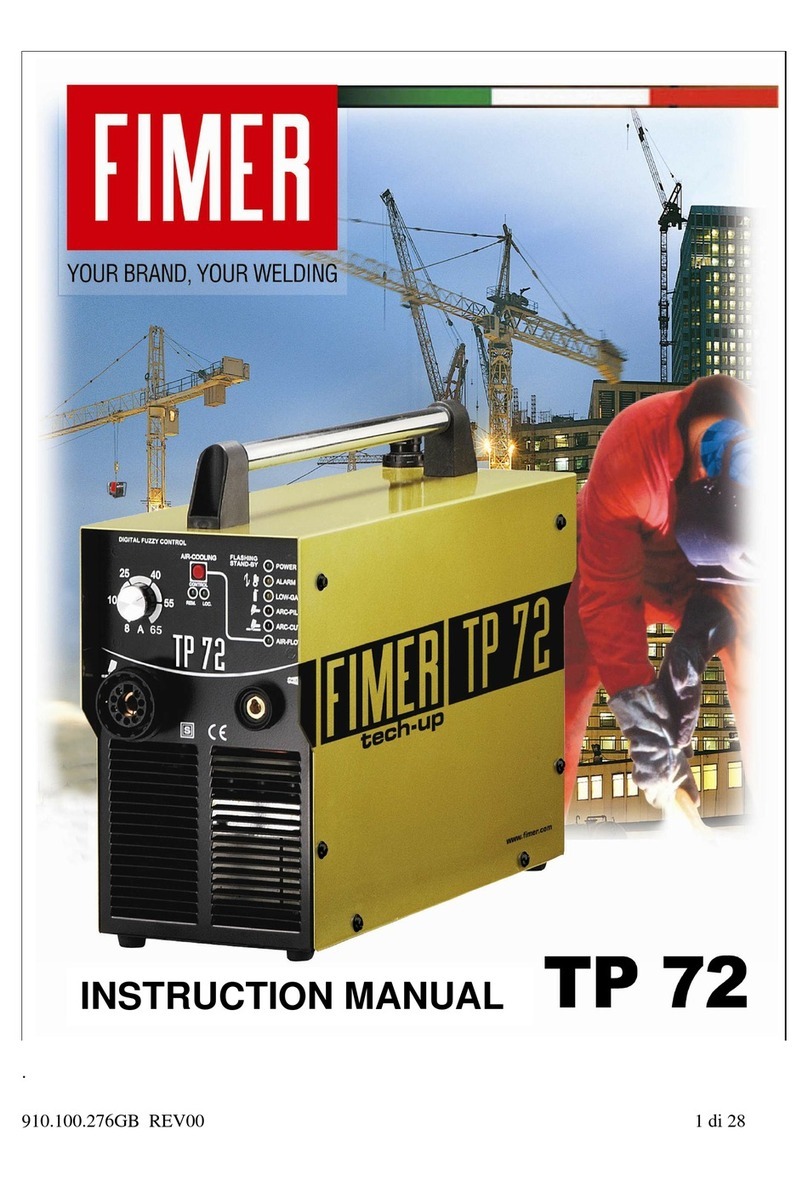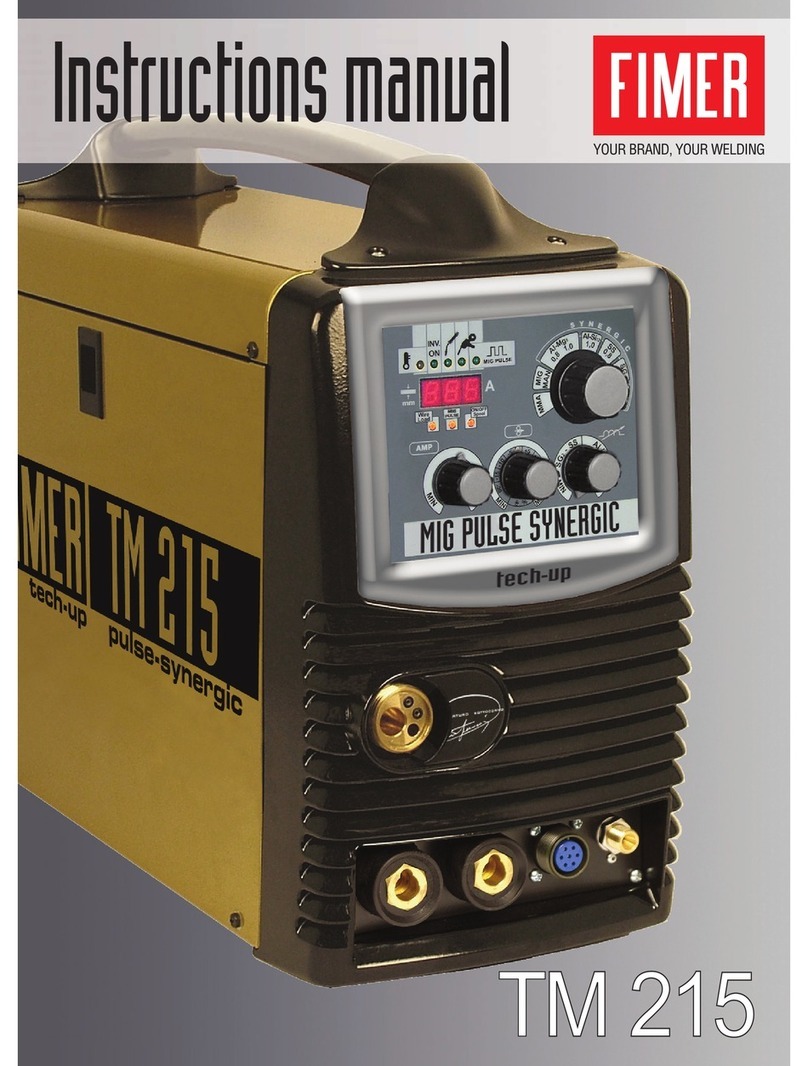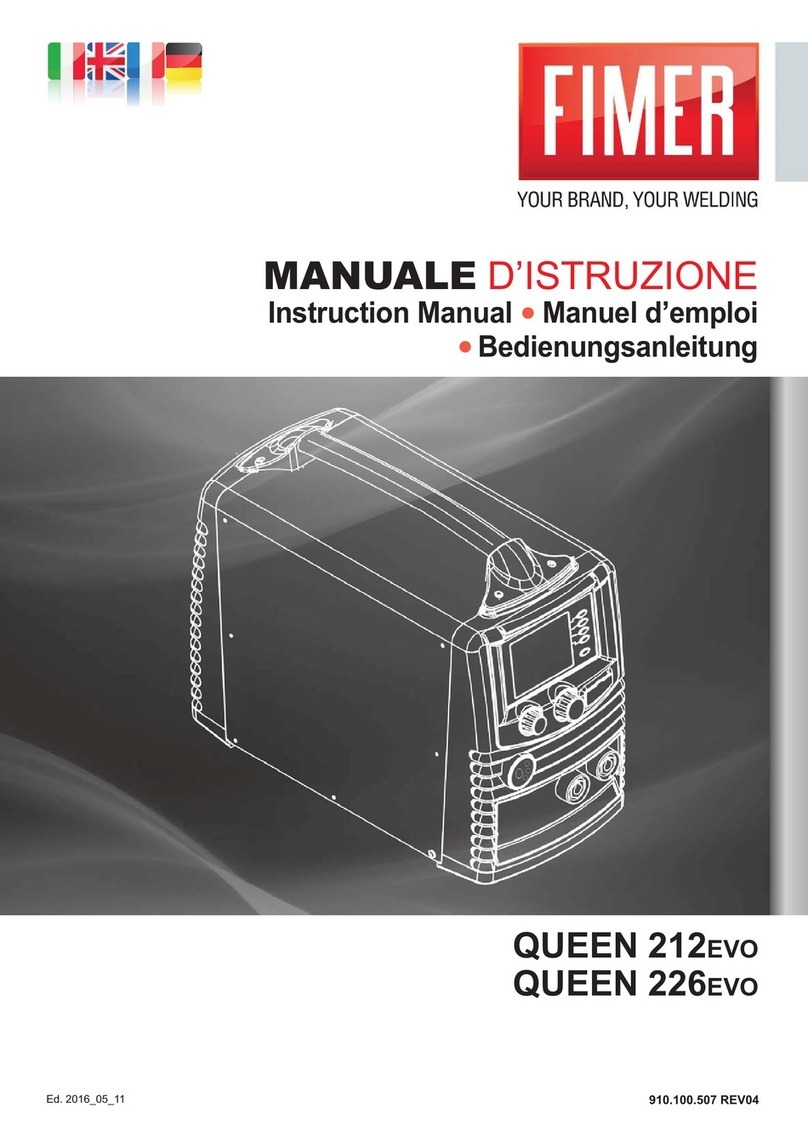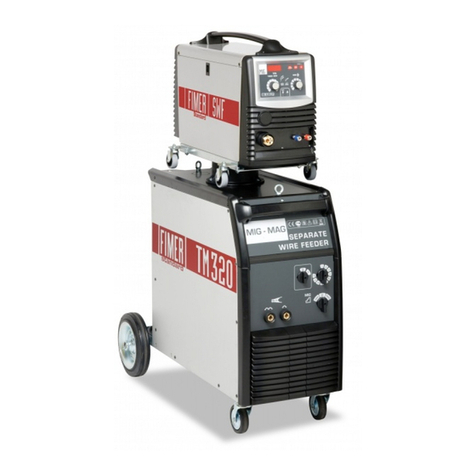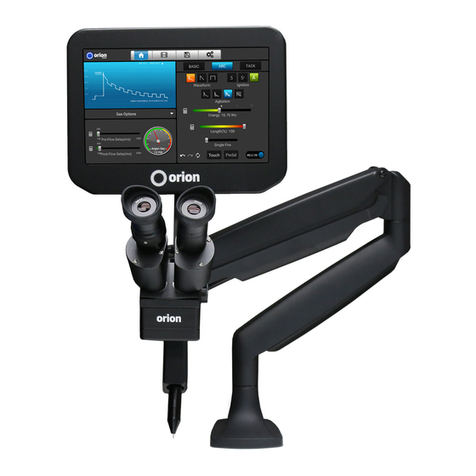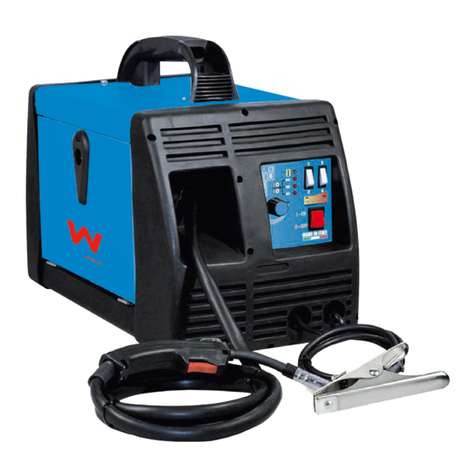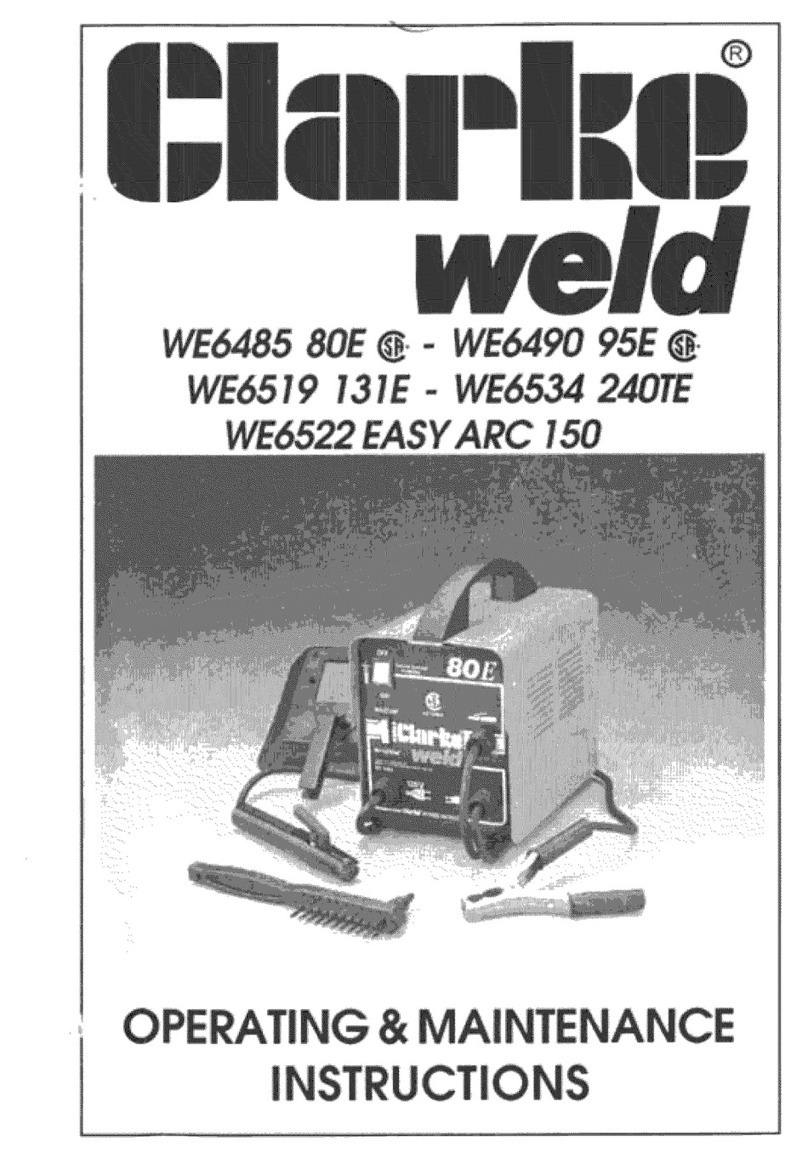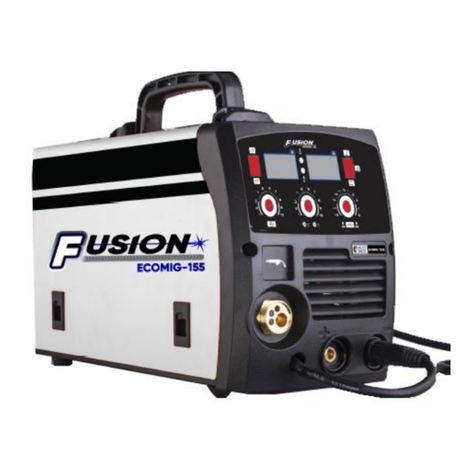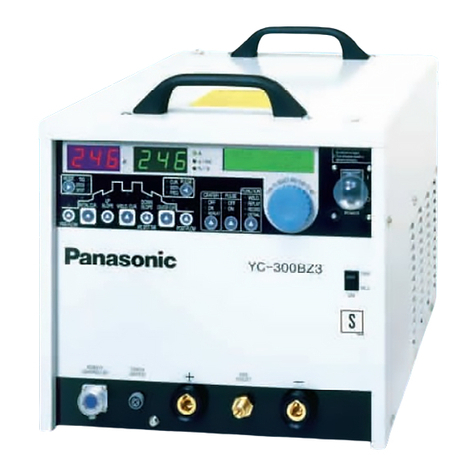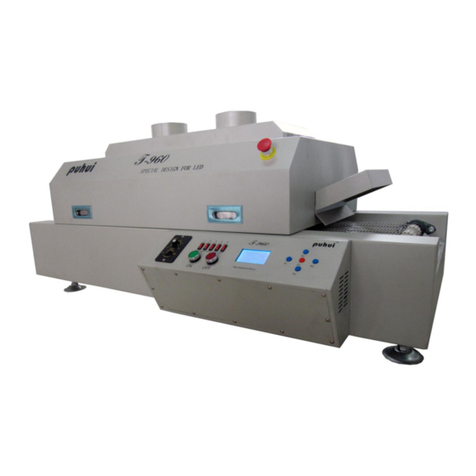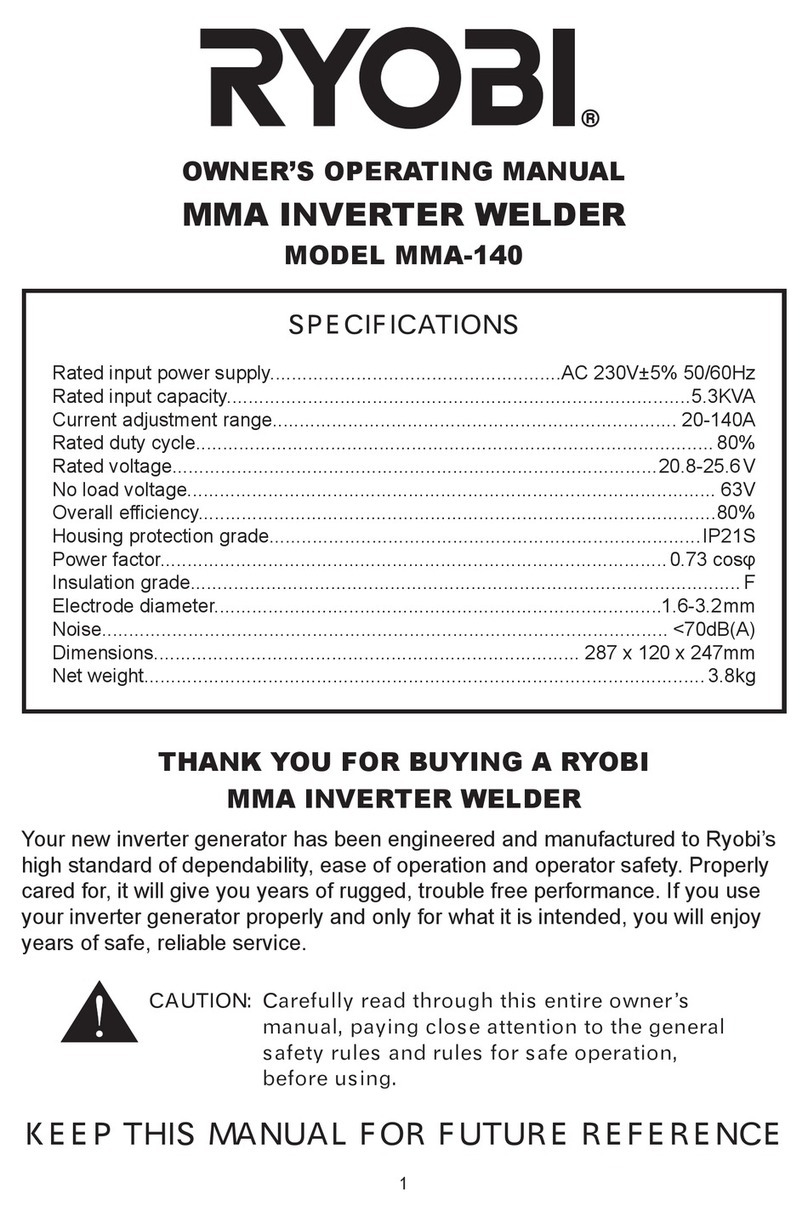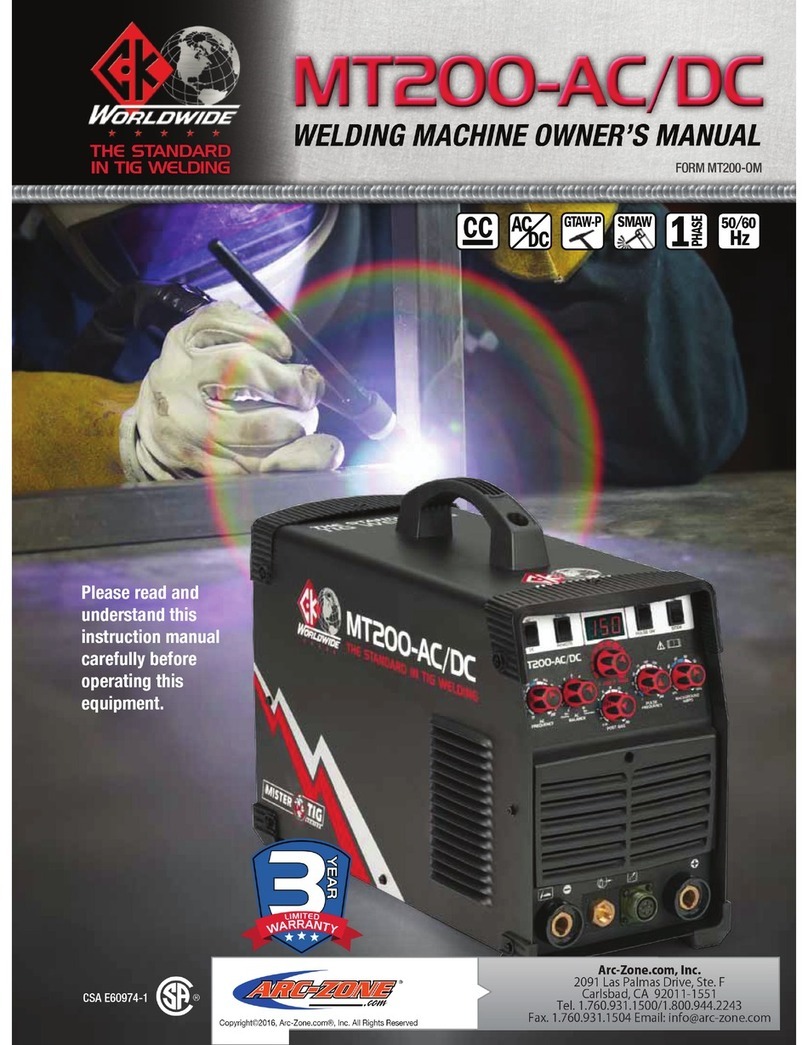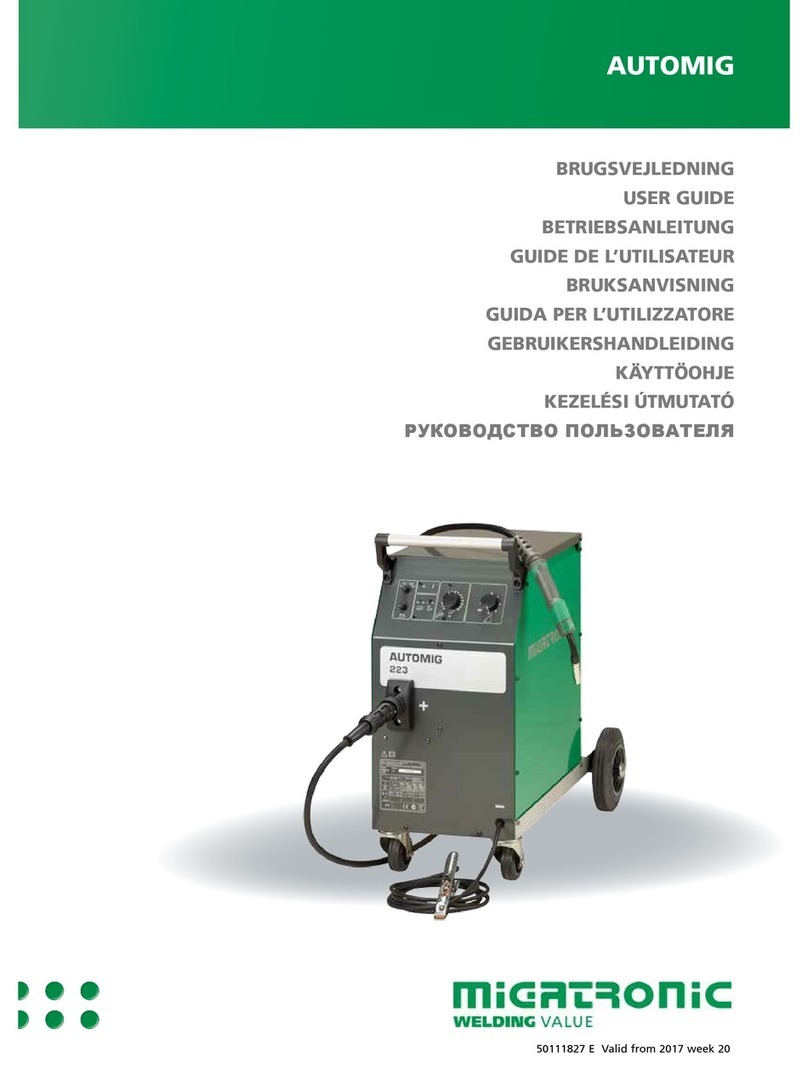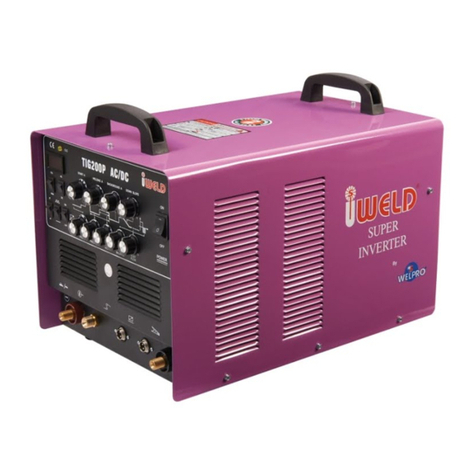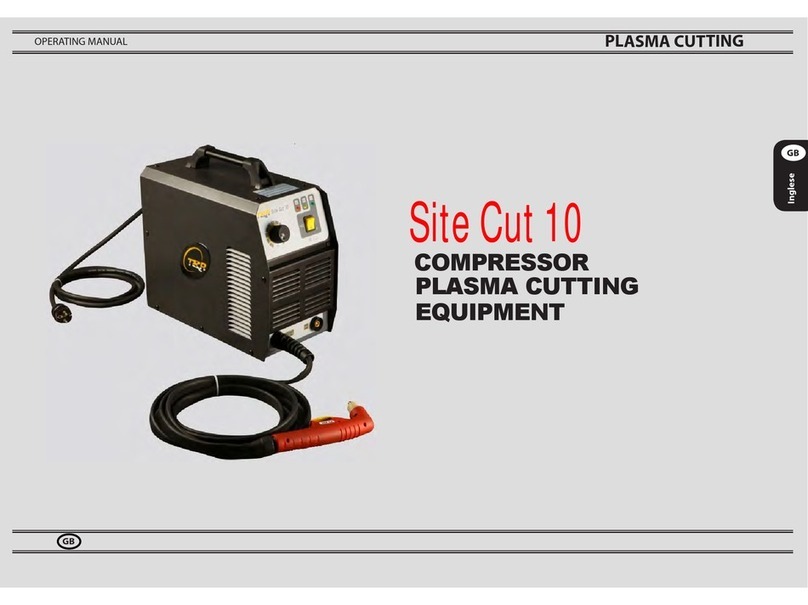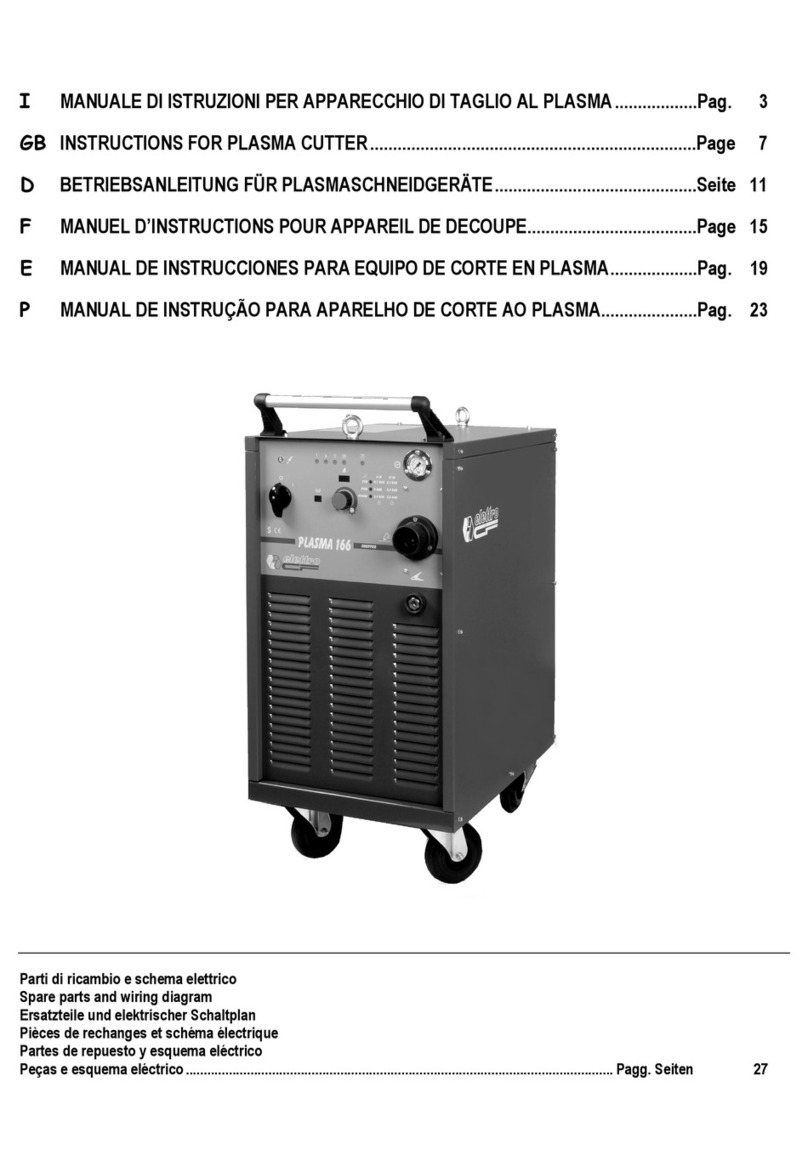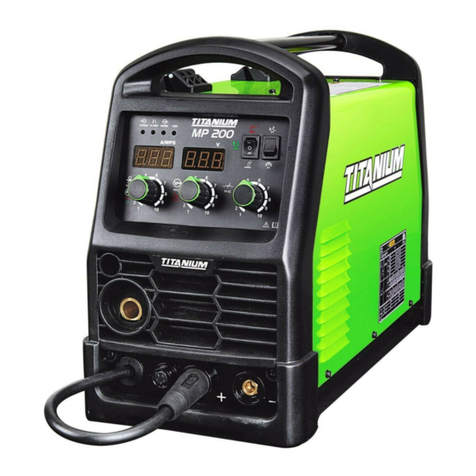Fimer QUEEN 210 User manual

Instructions manual
QUEEN 210

(MB)

(MB)
QUEEN 210

1
2
3
4
14
7
5
15
6
16
17
18
19
10
812 13
911
ITALIANO ENGLISH DEUTSCH FRANÇAIS ES AÑOL
1. NOME, INDIRIZZO E LOGO COSTRUTTORE
2. MODELLO
3. NUMERO DI SERIE
4. SCHEMA BLOCCHI
5. USCITA DI SALDATURA
6. UTILIZZABILE IN AMBIENTE
A MAGGIOR RISCHIO DI SCOSSA ELETTRICA
7. ALIMENTAZIONE
8. GRADO DI ROTEZIONE
9. TI O DI CORRENTE DI SALDATURA
10. TENSIONE NOMINALE A VUOTO
11. TENSIONE NOMINALE DI ALIMENTAZIONE
12. MASSIMA CORRENTE NOMINALE DI ALIMENTAZIONE
13. MASSIMA CORRENTE EFFETTIVA DI ALIMENTAZIONE
14. NORME DI RODOTTO
15. RANGE CORRENTE TENSIONE DI SALDATURA
16. CICLO DI INTERMITTENZA
17. CORRENTE NOMINALE DI SALDATURA
18. TENSIONE CONVENZIONALE DI CARICO
19. ANNO DI FABBRICAZIONE
1. MANUFACTURER’S NAME,
ADRESS AND COM ANY LOGO
2. MODEL
3. SERIAL NUMBER
4. BLOCK DIAGRAM
5. WELDING OUT UT
6. SUITABLE FOR USE IN HIGH-VOLTAGE AREAS
7. OWER SU LY
8. DEGREE OF ROTECTION
9. TY E OF WELDING OUT UT CURRENT
10. IN UT VOLTAGE
11. RATED IN UT VOLTAGE
12. MAXIMUM RATED IN UT CURRENT
13. MAXIMUM EFFECTIVE IN UT CURRENT
14. A LICABLE STANDARDS
15. RANGE OF WELDING VOLTAGE-CURRENT
16. DUTY CYCLE
17. RATED WELDING CURRENT
18. CONVENTIONAL LOAD VOLTAGE
19. YEAR OF CONSTRUCTION
1. NOM, ADRESSE ET LOGO CONSTRUCTEUR
2. MODELE
3. NUMERO DE SERIE
4. SCHEMA FONCTIONNEL
5. SORTIE DE SOUDURE
6. UTILISABLE EN MILIEU À RISQUE D’ELECTRIFICATION
ÉLEVÉE
7. ALIMENTATION
8. DEGRE DE ROTECTION
9. TY E DE COURANT DE SOUDAGE
10. TENSION NOMINALE A VIDE
11. TENSION NOMINALE D’ALIMENTATION
12. COURANT NOMINAL D’ALIMENTATION MAXIMUM
13. COURANT EFFECTIF D’ALIMENTATION MAXIMUM
14. NORMES DE RODUIT
15. LAGE DE COURANT/TENSION DE SOUDAGE
16. CYCLE INTERMITTENT
17. COURANT NOMINAL DE SOUDAGE
18. TENSION CONVENTIONNELLE DE CHARGE
19. ANNÉE DE RODUCTION
1. NOMBRE, DIRECCIÓN Y LOGOTI O DEL FABRICANTE
2. MODELO
3. NÚMERO DE SERIE
4. ESQUEMA BLOQUES
5. SALIDA DE SOLDADURA
6. SE UEDE UTILIZAR EN AMBIENTES CON MAYOR
RIESGO DE DESCARGAS ELÉCTRICAS
7. ALIMENTACIÓN
8. GRADO DE ROTECCIÓN
9. TI O DE CORRIENTE DE SOLDADURA
10. TENSIÓN NOMINAL EN VACÍO
11. TENSIÓN NOMINAL DE ALIMENTACIÓN
12. MÁXIMA CORRIENTE NOMINAL DE ALIMENTACIÓN
13. MÁXIMA CORRIENTE EFECTIVA DE ALIMENTACIÓN
14. NORMAS DE RODUCTO
15. ÁMBITO DE LA CORRIENTE DE TENSIÓN DE SOLDADURA
16. CICLO DE INTERMITENCIA
17. CORRIENTE NOMINAL DE SOLDADURA
18. TENSIÓN CONVENCIONAL DE CARGA
19. AÑO DE FABRICACIÓN
1. NAME, ADRESSE UND LOGO DES HERSTELLERS
2. MODELL
3. SERIENNUMMER
4. BLOCKSCHALTBILD
5. SCHWEISSAUSGANG
6. IN UMGEBUNG MIT HÖHERER
STROMSCHLAGGEFAHR VERWENDBAR
7. S EISUNG
8. SCHUTZART
9. SCHWEISSSTROMTY
10. LEERLAUFNENNS ANNUNG
11. NENNS EISES ANNUNG
12. HÖCHSTER NENNS EISESTROM
13. HÖCHSTER EFFEKTIVER S EISESTROM
14. RODUKTNORMEN
15. SCHWEISSS ANNUNGSSTROMBEREICH
16. AUSSETZBETRIEB
17. SCHWEISSNENNSTROM
18. KONVENTIONELLE LASTS ANNUNG
19. BAUJAHR
TARGA DATI, NOMINAL DATA, LEISTUNGSCHILDER LAQUE DON
TARGA DATI, NOMINAL DATA, LEISTUNGSCHILDER LAQUE DONÉ
ÉES, LACA DE CARACTER
ES, LACA DE CARACTERÌ
ÌSTICAS
STICAS
VI
QUEEN 210

PESO:
DIMENSIONI:
CARATTERISTICA STATICA:
DISPOSITIVO DI PROTEZIONE DI RETE:
TENSIONE DI INGRESSO:
PROTEZIONE TERMICA:
TEMP. INTERVENTO:
Le prove di riscaldamento sono state effettuate alla temperatura di 40°
FUNZIONE ARC FORCE E ANTI-STICKING:
DIAMETRI DEGLI ELETTRODI UTILIZZABILI:
WEIGHT:
DIMENSIONS:
STATIC CHARACTERISTIC:
POWER SUPPLY PROTECTION:
INPUT LOAD:
THERMAL PROTECTION:
INTERVENTION TEMPERATURE:
Overheating tests run at 40° C
ARC FORCE AND ANTI-STICKING FUNCTIONS:
MAX ELECTRODE DIAMETERS:
GEWICHT:
ABMESSUNGEN:
STATISCHE EIGENSCHAFTEN:
NETZSCHUTZVORRICHTUNG:
EINGANGSSPANNUNG :
WÄRMESCHUTZ:
EINSATZTEMPERATUR:
Die Erhitzungsprüfungen wurden bei einer Temperatur in Höhe von 40° durchgeführt
ARC FORCE UND ANTISTICKING FUNKTION:
VERWENDBARE ELEKTRODENDURCHMESSER:
POIDS:
DIMENSIONS:
CARACTÉRISTIQUE STATIQUE :
DISPOSITIF DE PROTECTION DE RÉSEAU :
TENSION D’ENTREE :
PROTECTION THERMIQUE :
TEMP. INTERVENTION :
Les essais de chauffe ont été effectués à la température de 40°
FONCTION ARC FORCE ET ANTICOLLANT :
DIAMETRES DES ELECTRODES UTILISABLES :
PESO:
DIMENSIONES:
CARACTERÍSTICA ESTÁTICA :
DISPOSITIVO DE PROTECCIÓN DE RED :
TENSIÓN DE ENTRADA:
PROTECCIÓN TÉRMICA :
TEMP. INTERVENCIÓN :
Las pruebas de calentamiento se han realizado con una temperatura de 40 ºC.
FUNCIÓN FUERZA ARC Y ANTISTICKING :
DIÁMETROS DE LOS ELECTRODOS UTILIZABLES :
ITALIANO ENGLISH DEUTSCH FRANÇAIS ESPAÑOL
ALTRI DATI TECNICI
ALTRI DATI TECNICI
ADDITIONAL TECHNICAL INFORMATION
ADDITIONAL TECHNICAL INFORMATION
WEITERE TECHNISCHE DATEN
WEITERE TECHNISCHE DATEN
AUTRES DONNEES TECHNIQUES
AUTRES DONNEES TECHNIQUES
OTROS DATOS TÉCNICOS
OTROS DATOS TÉCNICOS
17
220x560x420
cadente
230V +/- 10%
termostato tipo “thermic SO1”
presente
Ø 0,6; Ø 0,8; Ø 1,0 mm
Fusibili 25A Ritardati
Int. Bipolari: 25A Curva K o C
17
220x560x420
drooping
230V +/- 10%
Thermostat : “Thermic SO1”
Present
Ø 0,6; Ø 0,8; Ø 1,0 mm
25A Delay-Fuses
Two-Pole 25A K- or C-Standard Switch
17
220x560x420
fallend
230V +/- 10%
Thermostat Typ „thermic SO1”
vorhanden
Ø 0,6; Ø 0,8; Ø 1,0 mm
verzögerte 25A Sicherungen
Int. zweipolig: 25A K- oder C-Kurve
17
220x560x420
cadente
230V +/- 10%
Thermostat type “thermic SO1”
present
Ø 0,6; Ø 0,8; Ø 1,0 mm
Fusées Retardées 25A
Int. Bipolaires 25A Courbe K o C
17
220x560x420
cadente
230V +/- 10%
termostato tipo “thermic SO1”
presente
Ø 0,6; Ø 0,8; Ø 1,0 mm
Fusibles 25A Retardados
Int. Bipolares: 25A Curva K o C
VII
TECHNICA SPECIFICATION
TECHNICA SPECIFICATION
TECHNISCHE SPEZIFIKATIONEN
TECHNISCHE SPEZIFIKATIONEN
SPÉCIFICATIONS TECHNIQUES
SPÉCIFICATIONS TECHNIQUES
ESPECIFICACIONES TÉCNICAS
ESPECIFICACIONES TÉCNICAS
SPECIFICHE TECNICHE
SPECIFICHE TECNICHE


1
ESPAÑO FRANÇAIS DEUTSCH ENG ISH ITA IANO
USE AND MAINTENANCE MANUAL
USE AND MAINTENANCE MANUAL
Fimer S.p.a. thanks you for selecting this unit, it will prove to be a useful, problem-free
tool for many years to come if the instructions contained in this manual are followed scru-
pulously.
This manual must be considered as an integral part of the unit and must accompany it
when it change location or is resold.
The user must assume responsability for maintaining this manual intact and legible at all
times.
Fimer S.p.a. reserves the right to modify this manual at any time without notice.
All rights of translation and total or partial reproduction by any means whatsoever (inclu-
ding scanner, photocopy, film, and microfilm) are reserved and reproduction is prohibited
without the express written consent of Fimer S.p.a.
INDEX
INDEX
• WARNING .........................................................................................................
............................................................................................................... pag. 2, 3, 4
1. GENERA INFORMATION...................................................................... pag. 5
2. DESCRIPTION OF WE DER ............................................................... pag. 6
3. WE DING METHODS ............................................................................... pag. 8
3.1 MIG/MAG WE DING ............................................................................. pag. 8
3.1.1 MANUA MIG WE DING .................................................................... pag. 8
3.1.2 SYNERGIC SHORT ARC MIG WE DING ............................................... pag. 9
3.2 MMA WE DING ................................................................................... pag. 9
4. CONNECTION TO POWER SUPP Y ....................................................... pag. 9
5. OUTPUT CONNECTIONS ...................................................................... pag. 10
5.1 MIG WE DING CONNECTIONS WITH SHIE DING GAS ....................... pag. 10
5.2 MIG WE DING CONNECTIONS - GAS ESS ......................................... pag. 10
5.3 MMA WE DING CONNECTIONS .......................................................... pag. 10
6. WE DING WIRE INSTA ATION ............................................................. pag. 10
7. GAS CY INDER AND GAS PRESSURE REGU ATOR CONNECTIONS..... pag. 11
8. WE DING METHODS ........................................................................... pag. 12
8.1 MANUA MIG WE DING .................................................................... pag. 12
8.2 SYNERGIC MIG WE DING.................................................................. pag. 12
8.3 MMA WE DING .................................................................................. pag. 13
8.3.2 MMA WE DING FEATURES.................................................................... pag. 13
8.3.3 MMA WE DING ....................................................................................... pag. 14
9. WIRE INER REP ACEMENT ............................................................... pag. 15
10.TROUB E SHOOTING .......................................................................... pag. 16
11. B OCK DIAGRAM ............................................................................... pag. 16

2
#)#/'))$*!*(#*'.$'"
#)#)).%'$))$#('&*')$+$
*'#(#."
#)#)'( $)$-(/'(
#)#)'( $#*'#.$)(!
#)#)).%'$))$#('&*')$+$!.#'(
#)#)#'$!)'($
#)#)'( $#*'.$')#)+#)$"%'$%'#
!#$'"#)##$$"%'(((.!#'($''*!)$'(
#)#)%'*)$#()$) #,##()!!##
*(#)*#)
(&*%"#)((#($!!.$'#*()'!$'
%'$(($#!*(((*$#!.-%'#$'*!
!.)'#%$%!($*!*()&*%"#)*('
#$'$,#'('(%$#(!$'#(*'##-%'#%'($#
#!$(#$)+(()$)&*%"#)
().#$'")$#$#)##)("#*!(*)$
#(*'.$*'#$)(*))$*##(('.'( ($,+'
)$%')$'"*()$"%)#)#'*!)!!)"(
"'%!#(!!'(%$#(!).$'#*'.$'"
*(.#-%'#"%'$%'$'#!)*!*(
$)(&*%"#)
,$' "#"*()!$$ )'()$$!('*!!.""'))
#.)$$!$'&*%"#)#$"/')(#$)!$$
)'%'$%'!.
&*%"#)#())$('%'$'#!)##'$*()
$(#$)$%')%'$%'!.$'$+')()!)').(*%%!.($*!
'"$+"")!.#)*#)($*!')*'#)$)(*%
%!'$''%'
!!&*%"#)$##))$!)'%$,'(*%%!(##
'$*()"#*)*''(#()'*)$#('#$)'#$('
+*#'()##$('+)(().#()'*)$#(
)$'*)'( $)$'#*'.'$"!)'($ #(*'))
+#.()#'(','$#*#'()#)#'())-
()#),!#'
)("#*!'*!!.$'*(#.$*'!'
$*#)#$))'#('$
.'#)("#*!.$*,!!!'#"$'$*))
%$((!)(!"))$#(#%$)#)!#'($,!#
)#)("#*!$')#)'!$)&*%"#))($*!
%),)#)$%')$'0(')!!)"(
'(#-%!$($#(#('$*(!.#*'$'*("
*#'()##$('+!!().,'##(
)$'*)'( $)$'#*'.'$"'$'-%!$
($#.%')*!'))#)$#)$))))+#.()#'(($*!
,'$#*#'()#)#'(-()##),!#'
""')),!#.#)*'%'$*((%' ($)(%))'"$!
)#")!'$%($)(!#$)")!%')())#*('(#
*'#( ##".(
''.(#".$*'.(#*'#.$*'( #
*#'()##$('+!!().,'##()$+$"
'$"''.(.%')*!'))#)$#)$))))
+#.()#'(($*!,'$#*#'()#)#'(-
()##),!#''%'$))+"( #" (*'.()#
'($)("
*"()$-((#+%$*'(#'"*!
*#'()##$('+!!().,'##()$+$'"
'$")$-,!#((.%')*!'))#)$#)$))))+#
.()#'(($*!,'$#*#'()#)#'(
'!((#((,!*(#$'"#)##)$"%'(
((.!#'($''*!)$'(##*'$' !!)
$%')$'#$'.()#'(*#'()##$('+!!().
,'##()$+$)#'($$"%'(((.%')*!'
))#)$#)$))))+#.()#'(($*!,'$#
*#'()#)#'(
*#)''(%$)#)!!.!)!+$!)
+$!)'($)&*%"#)+#(')
##'$#!..*(#)$$!())'#$)%'$+,))
!'
!!"#)##$''%'$%')$#('&*'#(()$(*'(".
$#!.%'$'"."')'#)##(
+'!$ )'+#)(,)$'#$)(#+$
#.$#)),)!&*(!#*(#*()'.!$)
(().%'*)$#(%%!.+#,#)*#)((,)$
))!!!('%%'$%')!.*$'
)#%*)%$,''&*'..$*'(%!'
(%'*)$#%%!(!($)$-)#($#!(*(!!-)#($#
!("*()()')$!!(#$+')$"##
'$*(,()$'$!!(#!($*(!'"!*#)$#
*%%'%')$)!',(#$)(#)$,)
()#+.!$(+'()#$#)*#)
WARNING SYMBO S
WARNING SYMBO S

3
WELDING OPERATION
WELDING OPERATION
SAFETY INSTRUCTIONS
SAFETY INSTRUCTIONS
PERSONNEL PROTECTION
PERSONNEL PROTECTION
LOCATION
Place the Welder well away rom heat sources. Place the
Welder in a well-ventilated environment. Place the Welder in
a sa e, protected area. It must not be installed outdoors. Do not install the
Welder in dusty environments. Dust can get into the inner parts o the unit
and inhibit cooling. The Welder must be positioned on a lat, stable sur a-
ce that extends urther than the units own dimensions in all directions.
CLEAN LOCATIONS
The installation area must be kept clean and dry to be sure the Welder
ans do not draw in small objects or liquids. Not only could the equip-
ment mal unction but a serious risk o ire outbreak could be created.
REPAIRS
Never attempt to repair the Welder yoursel . Always
re er to the manu acturer or an authorized repairer.
All warranty provisions will immediately become null and void i any repair,
or attempt to repair, not speci ically authorized in writing or handled by
Fimer S.p.A. is carried out. Furthermore, Fimer S.p.A. will accept no
responsibility or any mal unction or damage resulting as a consequen-
ce o such unauthorized action.
SPARE PARTS
Use only manu acturer-recommended spare parts.
Other spare parts could cause equipment mal-
unction. The use o non-original spare parts will also result in the war-
ranty provisions becoming null and void, releasing the manu acturer
rom any responsibility or mal unction or damage resulting as a con-
sequence o such action.
CAUTION !
Welding processes can be dangerous or the operator and bystanders
i the sa ety warnings and instructions are not heeded.
WORK-AREA FLOORING
The work-area looring MUST be ireproo .
WORK-AREA SURFACES
Work benches or tables used during welding
MUST have ireproo sur aces.
PROTECTION MASK
Wear a protective non- lammable welding mask
to protect your neck, your ace and the sides o
your head. Keep the ront lens clean and replace it i it is broken
or cracked. Place a transparent protection glass between the mask
and the welding area.
CLOTHING
Wear close- itting, closed, non- lammable, pocke-
tless clothing.
EXTINGUISHER
Always place an approved ire extinguisher in the immediate vicinity
o the work area. Fire extinguishers should be checked regularly.
EYE PROTECTION
NEVER look at the arc without appropriate eye protection.
FUMES AND GASES 1
Clean away paint, rust or any other dirt rom the item to
be welded to avoid the creation o dangerous umes.
FUMES AND GASES 2
NEVER weld on metals containing zinc, mercury, chro-
mium, graphite, heavy metals, cadmium or beryllium unless
the operator and the bystanders use appropriate air-supplied respirators.
CONFINED SPACES
When welding in small environments, leave the power
source outside the area where welding will take place and
attach the grounding clamp to the part to be welded.
HUMIDITY
Never weld in wet or humid environments.
DAMAGED CABLES
Never use damaged cables. (This applies to both
the power and the welding cables.)
DAMAGED CABLES
Never remove the unit side panels. I the side panels
can be opened, always checked they are closed
tightly be ore starting any work.
HIGH VOLTAGE PROTECTION
HIGH VOLTAGE PROTECTION
Together with the previous instructions, the ollowing pre-
cautions should be strictly observed
FIRE PREVENTION
FIRE PREVENTION
Together with the previous instructions, the ollowing pre-
cautions should be strictly observed.
Welding operations require high temperatures there ore
the risk o ire is great.
TECHNICAL ASSISTANCE
The Welder must be taken to an authorized Technical Assi-
stance Centre i the equipment has been damaged in any way
or i any one o the ollowing events occurs : liquid in iltration; dama-
ge caused by alling objects; exposure to rain or humidity (exceeding
the speci ied limits); mal unction; per ormance ailure or i the equip-
ment has been dropped.
OVERLOAD PROTECTION
Check that the power source supplying the Welder carries the
correct voltage and is sa ety-protected. The power switch must open all the
power supply circuits. (I a single-phase connection is used, both the live and
the neutral poles must be open. I a three-wire connection is used , all three
poles must be open. Four-wire circuits require all poles and neutral open).
Time-delayed uses or K-standard circuit breakers should be used.
CABLE COLOURS
The green-yellow wire is or earthing. (Don’t use it or
anything else !)
INSTALLATION ENVIRONMENT
The equipment is not suitable or use in washrooms,
shower cubicles, pool areas or similar environments. I
you are obliged to use the unit in such areas, turn o all water sup-
plies and check the area has been evacuated.
OPERATING AND/OR INSTALLATION ENVIRONMENT 3
Never use the Welder in an explosive, corrosive, abra-
sive or saline environment.
VENTILATION
Weld in a well-ventilated environment that does not have
direct access to other work areas.
EARTHING
I the Welder was not already supplied with a plug, connect the
earth wire irst. When removing the plug, disconnect the earth
wire last.
PLUG AND POWER SUPPLY
Ithe Welder already has a plug attached, check that it is appro-
priate or the wall-socket you intend using. Never tamper with
the power cable.
RELOCATION 1
Some Welders are extremely heavy there ore care should be
taken when relocating the unit. Check the loor or plat orm wei-
ght load limitations be ore relocating the unit i the Welder is to be used,
even only temporarily, in a non-industrial environment
OPERATING AND/OR INSTALLATION ENVIRONMENT 1
The Welder was not designed or installation or use in areas where it
could be subject to blows or vibration, such as road-vehicles, railway
carriages, cable-cars, aircra t, ships or boats or similar environments (including
cranes, conveyor-carriers or any other mobile equipment prone to vibration)
OPERATING AND/OR INSTALLATION ENVIRONMENT 2
The Welder should never be used or stored in the rain or in snow.
RELOCATION 2
Never store or move the Welder in an inclined position or on its
side.
Together with the previous instructions, the ollowing
precautions should be strictly observed

CLEAN ENVIRONMENT
Remove all flamma le materials away from
the work environment.
SERIOUS DANGER ! 1
NEVER weld in confined spaces (e.g. in a con-
tainer vehicle, a cistern or a storeroom etc.) where toxic, inflamma-
le or explosive materials are, or have een, located or stored.
Cisterns, in particular, may still contain toxic, flamma le or explosi-
ve gases and vapours years after they have een emptied.
SERIOUS DANGER! 3
NEVER use the Welder to melt frozen water
pipes.
SERIOUS DANGER ! 2
NEVER weld a cistern that contains (or has stored)
toxic, inflamma le or explosive materials.
They could still contain toxic, flamma le or explosive gases and
vapours years after they have een emptied. If you are o liged to
weld a cistern, ALWAYS passivate it y filling it with sand or a simi-
lar inert su stance efore starting any work.
WELDING ENVIRONMENT VENTILATION
Ventilate the welding environment carefully. Maintain
sufficient air-flow to avoid toxic or explosive gas accumulation.
Welding processes on certain kinds or com inations of metals can
generate toxic fumes. In the event of this happening, use air-sup-
ply respirators. BEFORE welding, read and understand the wel-
ding alloy safety provisions.
GAS TYPES
These welders use only inert (non-flamma le) gases for welding
arc protection. It is important that the appropriate type of gas is
chosen for the type of welding eing performed.
UNIDENTIFIED GAS CYLINDERS
NEVER use unidentified gas cylinders.
PRESSURE REGULATOR 1
NEVER connect the cylinder directly to the Welder.
Always use a pressure regulator.
PRESSURE REGULATOR 2
Check the regulator is performing its function properly.
Read the regulator instructions carefully.
PRESSURE REGULATOR 3
Never lu ricate any part of the regulator.
PRESSURE REGULATOR 4
All regulators are designed for a specific type of gas.
Check the regulator is appropriate for the protective
gas to eused.
VENTILATION
VENTILATION
Together with the previous instructions, the following pre-
cautions should e strictly o served
PROTECTIVE WELDING GASES
PROTECTIVE WELDING GASES
Together with the previous instructions, the following
precautions should e strictly o served when welding
with protective gases
WALL AND FLOOR PROTECTION
The walls and flooring surrounding the welding
environment must e shielded using non-flamma le materials. This
not only reduces the risk of fire ut also avoids damage to the wal-
ls and floors during welding processes.
EXTINGUISHER
Place an approved and appropriately-sized fire extinguisher in
the work environment.
Check its working order regularly (carry out scheduled inspections)
and ensure that all parties involved know how to use one.
DAMAGED GAS CYLINDERS
NEVER use damaged or faulty cylinders.
CYLINDER RELOCATION
NEVER lift a gas cylinder y holding the regulator.
GAS CYLINDERS
Do not expose gas cylinders to excessive heat sour-
ces, sparks, hot slag or flames.
GAS HOSE 1
Check the gas hose is not damaged.
GAS HOSE 2
Always keep the gas hose well away from the work
area.
ELECTRIC SHOCK
Together with the previous instructions, the following pre-
cautions should e strictly o served to reduce the risk of
electric shock
ELECTRIC SHOCK INJURY
DO NOT touch a person suffering from electric shock if
he/she is still in contact with the ca les. Switch the mains power
source off immediately THEN provide assistance.
CABLE CONTACT
Do not tamper with power ca les if the mains power is still
switched on. Do not touch the welding circuitry. Welding cir-
cuitry is usually low voltage, however, as a precaution, do not tou-
ch the welder electrodes.
CABLE AND PLUG PRECAUTIONS
Check the power supply ca le, plug and wall-socket regularly.
This is particularly important if the equipment is relocated often.
REPAIRS
Never attempt to repair the Welder yourself. The result would
not only cause warranty cancellation ut also high danger risks.
MAINTENANCE PRECAUTIONS
Always check that the electric power supply has een discon-
nected efore performing any of the maintenance opera-
tions listed in this manual ( e.g. efore replacing any of the fol-
lowing: worn electrodes, welding wires, the wire feeder etc.)
Never point the welding gun or the electrode towards yourself
or others.
Check no power supply ca les, telephone ca les or other
electrical items (e.g. computer ca les, control lines etc.) are
in the vicinity of the Welder.
Check there are no telephones, televisions, computers or other
transmission devices close to the Welder.
ELECTROMAGNETIC COMPATIBILITY
Make sure that people with pace-makers are not in the imme-
diate vicinity of the Welder.
Do not use the Welder in hospitals or medical environments
(including veterinary surgeries). Make especially sure there
is no electrical medical equipment eing used close to whe-
re welding is eing done.
Should the Welder interfere with other apparatus, take the fol-
lowing precautionary measures:
1. Check the Welder’s side panels are securely fastened.
2. Shorten the power supply ca les.
Place EMC filters etween the Welder and the power source. (Con-
tact Fimer Technical Dept. in this respect )
EMC compati ility : CISPR 11, Group 2, Class A.
4

5
ESPAÑO FRANÇAIS DEUTSCH ENG ISH ITA IANO
1. GENERA INFORMATION
QUEEN 210 and Welders are based on
INVERTER technology; they are
extremely compact, versatile and can
be used in all situations where a
compact design needs to be flanked by
high performance. They can be used
for synergic MI /MA welding (pulse
or non-pulse), conventional MI /MA
welding or MMA welding.
Thanks to the advanced control
techniques, high-quality results and
reliability can be achieved without
resorting to larger, more expensive
equipment.
This instruction manual provides
details of all the operating methods and
controls. It will ensure you appreciate
the unit’s flexibility and praticality.
Should you decide not to read through
the entire manual, we strongly advise
you to read at least the following few
paragraphs (and the warnings
illustrated at the front ).
MANUA CONSU TATION
SUGGESTIONS The most frequently
consulted diagrams (1-4) are grouped
together on page 6
MIG welding: manual
1. eneral information
2. Description of welder
3. Welding methods
3.1. MI /MA Welding
3.1.1.Manual MI welding
4. Power supply connection
5. Output connections
5.1. MI welding connections - with
shielding gas
6. Welding wire installation
7. as cylinder and gas pressure
regulator connections
8. Welding instructions
8.1. Manual MI welding
MIG welding: synergic short-arc
1. eneral information
2. Description of welder
3. Welding methods
3.1. MI /MA Welding
3.1.2.Synergic short-arc MI welding
4. Power supply connection
5. Output connections
5.1. MI welding connections
6. Welding wire installation
7. as cylinder and gas pressure
regulator connections
8. Welding instructions
8.2. Synergic MI Welding
MMA Welding
1. eneral information
2. Description of welder
3. Welding methods
3.2. MMA Welding
4. Power supply connection
5. Output connections
5.2. MMA Welding connections
8. Welding instructions
8.3. MMA Welding
WARNING: The unit should only be
used for the operations described in
this manual.
It should not be used to melt frozen
pipes.

23
4
5
1
10
9
8
76
11
14
15
18
17
13
12
Fig.1
Fig.3
Fig.2
12
16
22
26
Fig.3A
Fig.4
Fig.4A Fig.4B
19
21
23
24 25
2. DESCRIPTION OF WE DER
+
-

7
ESPAÑO FRANÇAIS DEUTSCH ENG ISH ITA IANO
FIGURE 1 (pag. 6):
1. Display panel: shows welding current
value during normal operations. It also
displays other parameters relating to the
selected welding method.
- When unit is switched on, welder model
and firmware version.
- When being switched off, ‘OFF’ is
displayed.
- Should the letters ‘E.Ln’ appear on the
display panel and the LED2 lights up, it
means the power supply is below the
standard required.
2. Thermal Protection Signal and low
mains voltage: this lights up when the
unit overheats. Usually this occurs when
the welder duty-factor has been exceeded.
Check that the air-intake grills (17) on the
frontand back of the welder are not
clogged. Leave the welder switched on to
allow the internal components to cool
down. When the LED goes off, normal
welding operations can be resumed.
Should the letters ‘E.Ln’ appear on the
display panel 1 and the LED 2 lights up, it
means the power supply is below the
standard required.
3. Power Inverter Runnig ED: this lights
up when the welder is providing power.
4. MIG Welding Using: please refer to
para. 3.1.
5. Welding program selector: three
distinct settings
MMA: MMA welding setting (Please refer
to para. 3.2)
Manual MIG: welding setting (Please refer
to para. 3.1.1)
SYNERGIC: Synergic welding setting,
providing 6 selectable programmes
(Please refer to paras. 3.1.2 and 3.1.3).
6. Electronic inductance setting knob:
MMA: inactive
MIG (paragraph 3.1.2): electronic
inductance regulator
7. Wire speed regulator knob
MMA: inactive
Manual MIG (paragraph 3.1.1): wire
speed regulator
Synergic short-arc MIG welding
(paragraph 3.1.2): fine-tuning wire speed
regulator (± 20%)
8. Welding current regulator in MMA
and Manual MIG welding mode, power
regulator in synergic MIG welding mode
(according to thickness of workpiece and
wire speed).
9. INACTIVE
10. Welding wire loader button: to feed
the wire through without pressing the torch
button (only for MI welding). The wire
speed gradually increases from nil to the
highest speed. Feed flow regulation is
easier in this manner.
WARNING: When pressing the wire feeder
button keep the torch well away from your
eyes: The wire can cause serious injury!
WARNING: The wire-feed roller can trap
fingers when rotating.
11. Euroconnector: Fast-connect welding
torch connector Providing welding current,
gas and electric contact of the welding
torch.
12. Air-intake grills
13. Front “-“ socket: Heart connector
14. Front “+“ socket: MMA Electrode
clamp
FIGURE 2 (pag. 6):
12. Air-intake grills
15. ON/OFF SWITCH Switches ON or
OFF the unit
16. Rating plate
17. Welding gas hose socket
18. Power supply cable: Input cable
provided with plug. .
FIGURE 3 (pag. 6):
19. Welding wire spool
21. Wire-feeder unit
22. Welding wire guide
23. Motor
24. Upper wire-feeder rollers
25. Knurled knob
26. ower wire-feeder rollers

8
3. WE DING METHODS
This chapter contains a brief description
of the various welding methods available
and the relevant settings. This chapter
alone does not provide all the information
required for safe and appropriate use of
the unit. Later paragraphs must also be
read carefully (particularly as far as the
torch and cable connections are
concerned).
3.1 MIG/MAG WE DING
( ED 4, Fig.1 ‘on’)
During MI /MA welding, a metallic
electrode is melted into a welding pool.
The electrode is continuously fed at
constant speed controlled by the welding
torch. When the wire starts feeding
through and rests on the work-piece an
electric arc is generated. The arc melts
the wire on to the work-piece.
Continuous wire welding enables the use
of higher density currents than when
welding with coated electrodes, therefore
deeper deposits can be left and the joint
can be filled making fewer runs.
Three types of wire can be used:
1. solid wire: always used with shielding
gas – connection row 2, fig 5.
2. flux-core wire for gas welding: the
core of which contains a mineral which is
able to improve the welding
characteristics (always used with gas)
- connection: row 2, fig 5.
3.1.1 MANUA MIG WE DING
(Fig.1: ED 4 ’on’)
To select this mode, turn knob 5
(Fig.1) to the MIG MAN setting.
While welding, use the welding current
regulator (Fig.1 –8) and the wire-speed
regulator (Fig.1 – 7) as appropriate.
The welding current and the wire speed
must be regulated according to the
thickness of the workpiece. Thicker
workpieces require higher welding
currents and faster wire speeds. For best
results, fine-tune the wire speed while
welding.
The wire speed (m/s) will be displayed for
app. 2 seconds when the knob (fig1 – 7)
is turned.
The quality of the weld can be improved
even further by regulating the electronic
inductance (Fig.1 – 6) in accordance with
the guidelines provided in the paragraph
8.1.
Each time the electronic inductance knob
is turned (Fig.1 - 6), the selected
inductance is displayed on panel 1 for
app. 2 seconds.
3.1.2 SYNERGIC SHORT ARC MIG
WE DING
SHORT ARC MIG WE DING (Fig.1: ED 4 ‘on’)
To select this mode, turn knob 5 (Fig.1)
to the SYNERGIC setting (Al-Mg5 0.8, Al-
Mg5 1, Al-Si12 1, SS 0.8, SG2 0.8 and
Cu-SI3 0.8)
The parameters used for the various
kinds of materials to be welded can be
selected easily when in Synergic Short
Arc MI Welding mode. When using the
synergic welding function, the thickness
Fig.5
N. METHOD
OF
WELDING
EURO
CONNECTOR
FRONT
SOCKET
+
FRONT
SOCKET
-
11 DI FIG.1 14 DI FIG.1 13 DI FIG.1
1 MMA NOT USED ELECTRODE
CLAMP
EARTH
CABLE
2 MIG TORCH CABLE NOT USED EARTH
CABLE

9
ESPAÑO FRANÇAIS DEUTSCH ENG ISH ITA IANO
of the workpiece can be selected turning
knob 8 (Fig.1). (Each time the knob is
turned, the selected thickness is
displayed on panel 1 for app. 2 seconds
then the welding current is displayed
again.)
The wire speed is set automatically in
accordance with the programme selected
using the appropriate mode selection
knob (Fig1 – 5). Basically, knob 8 sets
the welding power according to the
thickness of the workpece.
Thicker workpieces require more power.
The automatically-selected wire speed
can be fine-tuned using the knob 7
(Fig1).
The quality of the weld can be improved
even further using the “electronic
inductance” knob (Fig1 -6 ).
3.2 MMA WE DING
(Fig1: ed 4 ‘OFF’)
Turn knob 5 (Fig.fig1) to the MMA
position.
(Line 1, Fig.5)
Electric MMA (Metal Manual Arc) and
SMAW (Shielded Metal Arc Welding) are
both manual procedures exploiting the
heat generated by an electric arc that is
produced when covered welding
electrodes make contact with the
workpiece. It is commonly used due to
its versatility. In fact, welding jobs can be
performed anywhere: in a workshop, in
the open, in confined spaces or hard to
reach areas. A wide range of electrodes
are available, suiting all requirements.
The arc is generated touching the
electrode to the workpiece.
The potentiometer knob (Fig. 1 – 8)
regulates the welding current (thicker
workpieces require higher current
settings).
The display panel (Fig.1 – 1) shows the
current value selected.
While welding the following features
come into effect:
Arc Force:
A temporary increase in the initial
welding current to ensure the generation
of an arc quickly and reliably.
Antisticking: Stops the welding current
if the operator makes a mistake causing
the electrode to stick to the workpiece.
The electrode can be removed from its
clamp without causing damaging sparks.
The correct electrode and earth clamp
connections are shown in Line 1 of
Figure 5. The electrode clamp is
connected to the positive pole and the
earth clamp is connected to the negative
pole. Check these connections with the
instructions on the electrode packaging,
inverting them if necessary.
4. CONNECTION TO POWER SUPP Y
Before plugging the unit in, check the
power supply voltage, phase and voltage
frequency.
The permissible voltage is shown in the
“Technical Specification” chapter of this
manual and on the unit nameplate.
Ensure the welder is earthed
appropriately. Also check that the plug
provided with the unit is compatible with
the local power grid socket. Make sure
that the power supply is sufficient to
operate the welder.
The types of power supply protection
devices to be used are listed in the
“Technical Specification” section of this
manual. The power cable supplied with
the welder (Fig. 2 –18) should not be
extended but, if that becomes necessary,
either an identical or greater cross-
section cable should be used according
to the final cable length. All the models
require a three-wire cable (positive,
negative and earth) with a minimum
cross section area equal to 1,5 mm².

10
5. OUTPUT CONNECTIONS
The welding cables are connected using
fast-connector plugs.
5.1 MIG welding connections
1) Connect the earth cable to the -
socket on the front panel of the unit (Fig
1 – 13). Lining up the peg and the
groove, insert the plug and screw it in
well clockwise. Do not over-tighten.
2) Connect the torch to the appropriate
Euroconnector (Fig. 1 – 11) and screw in
clockwise up to stop. Do not over-tighten.
WARNING: The life of the MI torch will
be extended if the following items are
checked regularly: gas nozzle (Fig4A)
and wire feeder (Fig4B).
These items must be kept clean and
intact.
Replace the wire-feeder guide when the
wire does not flow through smoothly
5.2 MMA Welding connections
The welder is supplied in the correct
polarity configuration for MMA welding:
Check the polarity inversion settings
before making the output connections
(Fig.3 – 20) as per Line 1 of Fig 5.
1) Connect the electrode clamp to the +
socket on the front panel of the unit (Fig
Fig1 – 14). Lining up the peg and the
groove, insert the plug and screw it in
well clockwise. Do not over-tighten.
2) Connect the earth cable to the -
socket on the front panel of the unit (Fig
1 – 13). Lining up the peg and the
groove, insert the plug and screw it in
well clockwise. Do not over-tighten.
WARNING: Some electrodes require
negative polarity on the electrode clamp
and positive polarity on the earth cable.
In that case, invert the connections!
Always check the electrode packaging
for instructions regarding the required
polarities!
The welding cables are connected using
fast-connector plugs.
6. WE DING WIRE INSTA ATION
(For MI welding only) Skip this chapter
if you intend welding in MMA mode
Install the welding wire as follows,
referring also to Figure 3.
WARNING: Before installing the
welding wire always remove the gas
nozzle (Fig. 4A) and the wire feeder
(Fig.4B) from the torch.
1. Disconnect the mains power supply
(Fig. 2 -18)
2. Unscrew the central knurled bobbin
of the spool (19) and remove the empty
spool if there is one.
3. Remove the plastic protection from
the new spool and install the spool on
the holder (Fig – 19). Reinstall the
knurled bobbin. Beware: The smaller
knob at the centre of the bobbin is, in
fact, the wire brake. If it is too tight it
could provide too much braking power
and stop the wire-feed motor from
functioning properly. On the other
hand, if it is not tightened sufficiently it
may not provide sufficient braking
power to stop wire-feeding once the
welding operation has been completed.
4. Unscrew and raise the knob (25),
then lower the lower roller of the wire
feeder (24). If necessary, remove any
wire remnants left by the previous
spool.
5. Place the tip of the wire into the input
guide (22) and push it along until it
reaches the wire feeder roller.
6. Lower the rollers (24) and replace the
plastic knob (25) of the wire tension
regulator. Tighten the knob with care. If
it is too tight the wire will not flow
smoothly and the feeder motor can be
damaged. If, on the other hand, it is too
loose the feeder motor will not be able

11
ESPAÑO FRANÇAIS DEUTSCH ENG ISH ITA IANO
to guide the wire through.
N.B. When changing to a wire of
different diameter, check that the
correct roller groove is facing towards
the outside of the unit.
The wire feeder roller supplied with the
unit bears the inscription “0.8” on one
side. When an 0.8 inscription is showing
the unit is set for use with 0.8 mm filler
wire or 0.9 mm flux-core wire. When
“1” appears on the display panel, the
welder has been programmed for use
with 1mm diameter solid wire.
Unscrew the two knurled knobs to
access the lower wirefeeder rollers (26).
N.B. When using aluminium wire, use
the rollers with the “U”-shaped slots
instead of the ones with “V”-shaped
slots (factory configuration).
WARNING: Before proceeding further
check the torch cable (Fig 4) is straight
and that the tip of the welding is
smooth. Heed this cautionary note to
avoid damage to the wire-feeder.
7. Connect the mains power cable,
switch the unit on (Fig 2 – 15) and press
the wire-feed button (Fig1 – 10). The
welding wire will be fed into the torch
cable. When it exits the tip of the torch,
release the button. Switch the unit off
and install the wire-feeder guide
(Fig.4B) and the gas nozzle (Fig. 4A) on
to the torch.
WARNING: When pressing the wire
feeder button (fig 1- 10) keep the torch
well away from your eyes.
The wire can cause serious injury!
WARNING: The wire-feed roller can
trap fingers when rotating. Check the
state of the wire-feed rollers regularly
and replace them when worn; non-
replacement can jeopardise the smooth
wire feeding process.
7. GAS CY INDER AND GAS
PRESSURE REGU ATOR
CONNECTIONS
Only for MI welding: Skip this charter
entirely if the welder is to be used for
MMA welding.
Carefully follow the procedure shown
in Fig. 6:
1. Connect the pressure regulator (2) to
the gas cylinder (3). Tighten the bolt (6)
between the regulator (2) and the
cylinder (3). Do not overtighten to avoid
damaging the cylinder valve (1).
2. Connect the gas hose of the torch (4)
to the pressare regulator (2) and clamp
securely using a clasp (5). (Alternatively
use cylinder and hose fast connectors).
3. Connect the other end of the gas
hose (6) to the socket on the rear panel
of the welder unit (Fig.2 – 23), securing
it with a clasp.
4. Connect the gas hose from the torch
to the appropriate socket (7) on the
front panel of the unit (fig 1 - 33),
tightening clockwise. Do not over-
tighten.
5. Open the gas cylinder valve (1).
Press the torch button and check that
gas is flowing through correctly.
WARNING: Cylinders contain high
pressure gas. Handle them with care.
Inappropriate treatment can cause
4
3
2
1
6
2
51
3
5
Fig.6

12
serious accidents. Do not
pile gas cylinders up and never expose
them to excessive heat, flames or
sparks. Do not bang cylinders against
each other. Contact your supplier for
more information regarding the use and
maintenance of gas cylinders.
WARNING: Never use cylinders that are
damaged or show signs of oil or grease
leakage. Contact your supplier
immediately of any such circumstances.
8. WE DING METHODS
8.1 Manual MIG welding
To select this mode, turn knob 5 (Fig.1)
to the MI MAN setting.
N.B.: These are guidelines only and are
to be considered applicable solely to
workpieces no thicker than 4mm.
The settings are selected according to
wire diameter, location and welding gas.
Proceed as follows for manual MIG welding:
1. Set the welding current, according to
the thickness of the workpiece and the
diameter of the wire to be used, using
the knob 8, Figure 1 (Step 1, Fig8). The
display panel (Fig. 1 – 1) shows the
value selected.
2. According to the diameter of the wire,
set the wire speed using knob 7 of
Figure 1. (Step 3, Fig.8)
Step 1: Current selection
Convert the thickness of the
workpiece in to Amperes (A)
using the following formula:
0.025mm = 1A
i.e. 3mm = 125A
Step 2: Wire diameter selection
AMPERE (Min-Max) WIRE DIAMETER
40-90 A 0,6mm
60-140A 0,8mm
80-160A 1mm
100-200A 1,2mm
Material Electronic inductance setting
Ferrous materials (S 2 S 3) min med
Stainless steel (NI-Cr) med
Aluminium (Al)
Copper-silicon (Cu-SI3)
Copper-aluminium (CU-Al8)
Step 3: Wire diameter selection
wire diameter recommended wire speed
0,6mm 1 amp ( 90mm/min)
0,8mm 1 amp ( 50mm/min)
1mm 1 amp ( 40mm/min)
1,2mm 1 amp ( 30mm/min)
wire speed
90x120=11m/min
50x120=6m/min
40x120=5m/min
30x120=3,5m/min
Step 4: Electronic inductance selection
med max
med max
med max
Fig 7: Current reference values, wire diameter, wire
speed and electronic inductance.

13
ESPAÑO FRANÇAIS DEUTSCH ENG ISH ITA IANO
3. According to the kind of material,
regulate the electronic inductance (Fig.
1 –6). (Step 4, Fig8)
4. Connect the earth clamp to the
workpiece. 5. Start to weld maintaining
an arc length of between 5 to 10 mm.
6. Regulate the wire speed (Knob Fig. 1
– 7).For best results regulate the speed
(Knob 9) until a loud, regular sizzling
sound is heard (similar to that of frying
bacon).
Always perform a trial run using a metal
sheet that is free of grease, rust or
paint.
For best results heed the following
advice:
1. Keep the torch at a 45° angle to the
workpiece. Keep the gas nozzle
(Fig.4A) app. 6 mm away from the
workpiece.
2. Move the torch smoothly.
3. Weld using small zigzag movements
so as to be able to regulate the size of
the weld as desired.
4. Do not weld in windy surroundings.
Draughts can disperse the gas from the
welding pool causing porous welding
results. 5. Ensure the wire is clean:
never use rusty welding wire.
6. Keep the torch cable straight.
7. Clean the wire-feed guide with
compressed air when changing spools.
8. Remove dust from the air intake grills
regularly, using low-pressure
compressed air.
Always point the jet of air outwards to
avoid dirt being forced into the unit.
8.2 SYNERGIC MIG WE DING
In synergic MI welding (with gas)
mode the welder tunes itself
automatically to suit the type of material
to be welded and the thickness of the
workpiece. Contrary to manual mode,
a series of predefined programmes to
suit all requirements are available.
It should be noted, however, that certain
parameters can be set manually. More
information in this respect will be
provided in later sections.
To select this mode, turn knob 5 (Fig.1)
to one of the SYNER IC settings.
Proceed as follows for synergic MIG
welding: 1- Select one of the following
programmes according to the type of
material to be welded (Selector knob 7,
Fig1)
• Al-Mg 0.8: The permissible thickness
range is 0.8 to 4 mm.
• Al-Mg 5 1.0: The permissible
thickness range is 0.9 mm to 5 mm.
• Al-Si 12 1.0: The permissibile
thickness range is 0.8mm to 5 mm
(Spool un welding is recommended for
this type of wire).
• SS 0.8: ideal for welding stainless
steel (Ni-Cr) 0.8mm in diameter.
The permissible thickness range is 0.8
mm to 5 mm.
•SG2 0.8: ideal for welding S 2 or S 3
materials 0.8mm in diameter.
The permissible thickness range is 0.8
mm to 3.2 mm.
• Cu-Si 3 0.8: Ideal for Cu-Si3 having a
diameter of 0.8 mm. Such materials can
be braze welded, particularly zinc-
plates iron sheets to be used by car
manufacturers
The permissible thickness range is 0.8
to 4 mm.
2- Select the workpiece thickness using
Knob 2 of Figure 8. The display panel
(Fig. 1 – 1) will display the selected
thickness parameter (in mm) for a few
seconds.
3- Turn knobs 6 and 7 to a mid-way
position.
4- Connect the earth clamp to the
workpiece.
5- Start to weld maintaining an arc
length of between 5 to 10 mm.
A high-quality result is usually achieved

14
in this mode. However, the
following instructions may
help you achieve
6- If during welding the arc tends to
decrease excessively, turn knob 7 of
Figure fig1 anti-clockwise to reduce the
wire speed, which will also decrease the
weld pool. If, on the other hand, the arc
tends to over-lengthen, turn the knob
clockwise.
7- If there is too much splatter while
welding, the electronic inductance
parameter needs to be increased. Do so
turning knob 6 of Figure 1 clockwise. If
maintaining an arc is difficult, turn the
knob anti-clockwise.
8.3 MMA WE DING
8.3.1 Description
Electric MMA (Metal Manual Arc) and SMAW
(Shielded Metal Arc Welding) are both manual
procedures exploiting the heat generated by
an electric arc that is produced when covered
welding electrodes make contact with the
workpiece. It is commonly used due to its
versatility. In fact, welding jobs can be
performed anywhere: in a workshop, in the
open, in confined spaces or hard to reach
areas. A wide range of electrodes are
available, suiting all requirements.
The arc is generated touching the electrode
to the workpiece.
The potentiometer knob (Fig. 1 –8) regulates
the welding current (thicker workpieces
require higher current settings).
8.3.2 MMA Welding Features
While welding the following features come into
effect:
Arc Force: Whenever the arc tends to drop
the microprocessor automatically increases
the welding current in order to maintain and
stabilise the arc.
Hot Start: The arc is generated touching the
electrode to the workpiece. To ensure the arc
is generated efficiently, the microprocessor
increases the welding current for app. one
second, guaranteeing fast, safe arc
generation.
Antisticking: Decreases the welding current
up to minimum, when the operator makes a
mistake causing the electrode to stick to the
workpiece. The electrode can be removed
from its clamp without causing damaging
sparks.
8.3.3 MMA Welding
Fig 8 Welding current at the electrode diameter
Proceed as follows for MMA welding:
1. Using knob 8 (Fig.1) select the welding
current according to the type of electrode and
the thickness of the workpiece. The welding
current value is shown on display panel 13. The
knobs 6 and 7 (fig.1) are disabled. uidance
values suitable for various electrode diameters
are provided in Fig 8
2. Connect the earth clamp to the workpiece.
3. Place the electrode in the clamp.
4. During the entire welding process maintain
a 3-4mm distance from the welding pool that
has been created. Weld using small zigzag
movements so as to be able to regulate the
size of the weld as desired.
5. Remove the electrode from the workpiece
to stop welding.
Diametro (mm) Corrente (A)
1.6 35-50
2.0 40-70
2.5 60-100
3.25 80-140
4.0 120-170
5.0 180-250
Table of contents
Other Fimer Welding System manuals
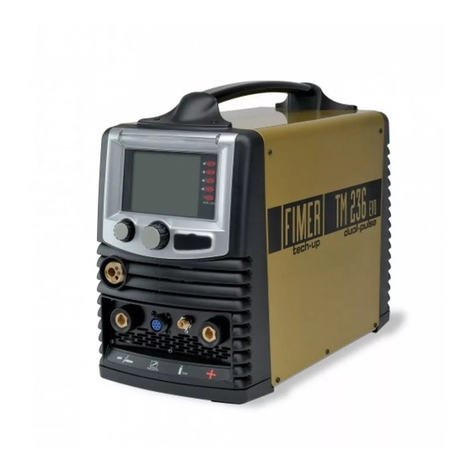
Fimer
Fimer TM 236 User manual
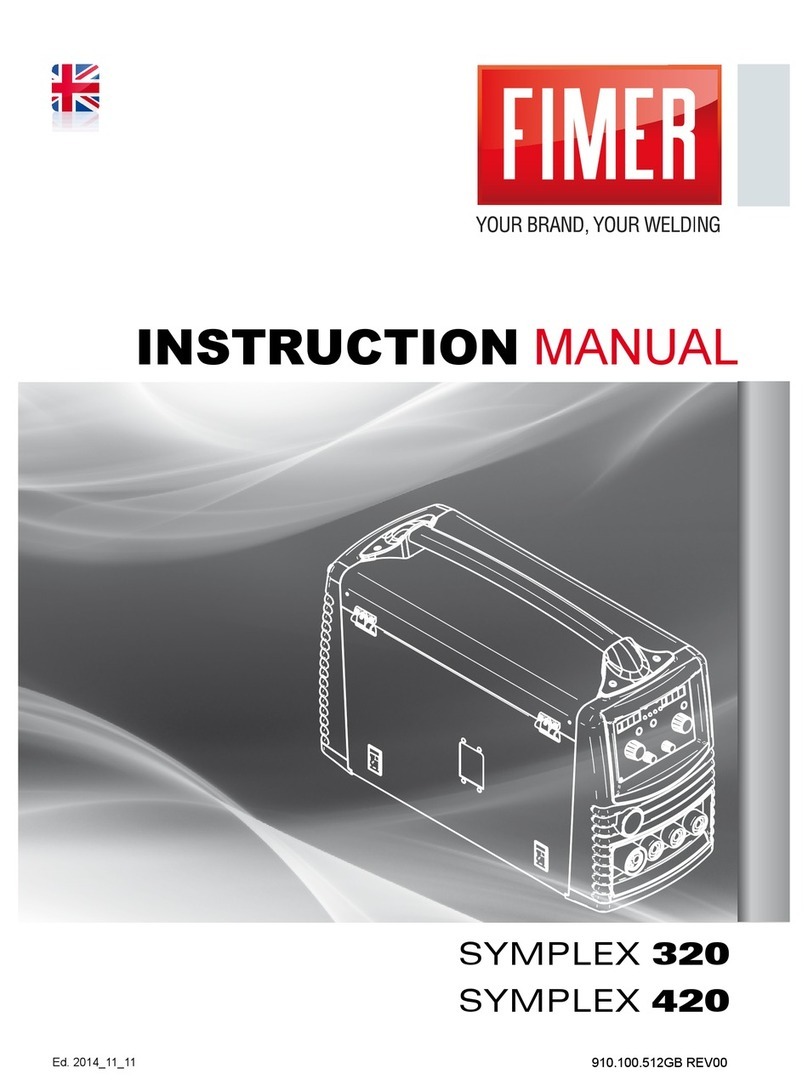
Fimer
Fimer SYMPLEX 320 User manual
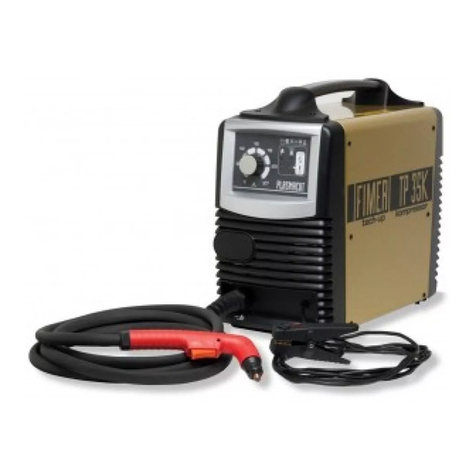
Fimer
Fimer TP 35K User manual
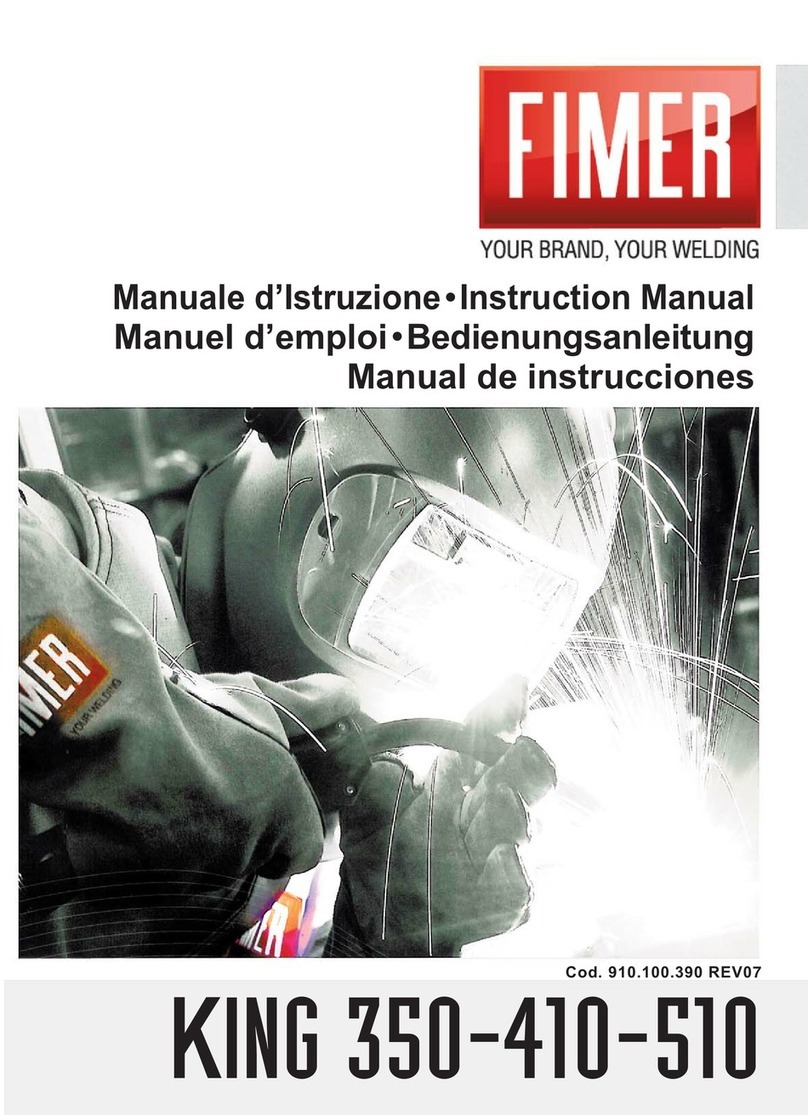
Fimer
Fimer King 350 User manual
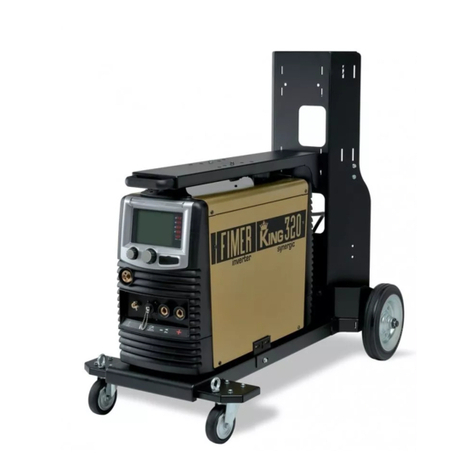
Fimer
Fimer King 320 User manual
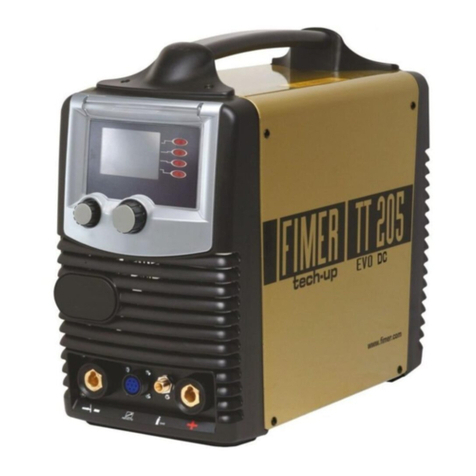
Fimer
Fimer TT205 DC User manual
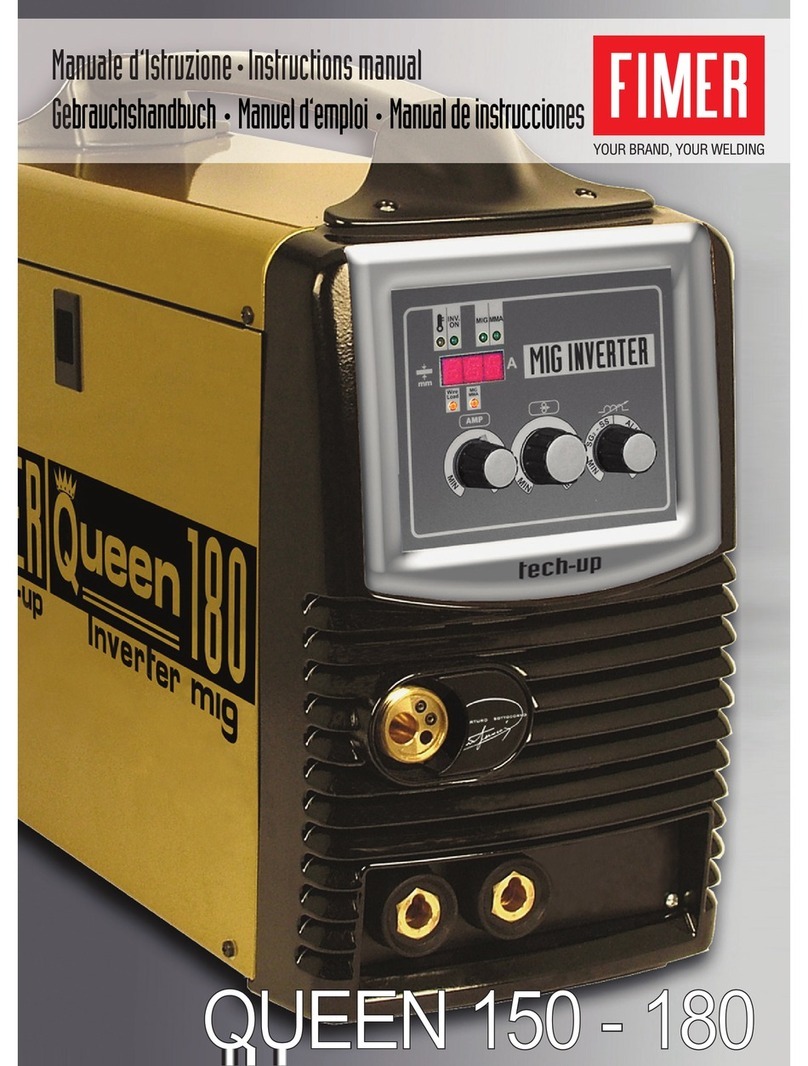
Fimer
Fimer QUEEN 180 User manual
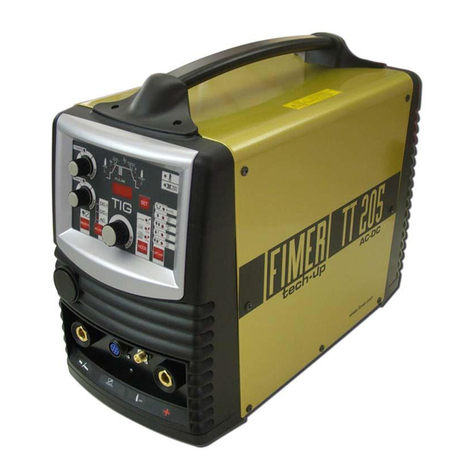
Fimer
Fimer TT165 AC/DC User manual

Fimer
Fimer T252 User manual

Fimer
Fimer KRONOS 500 dual-pulse User manual
